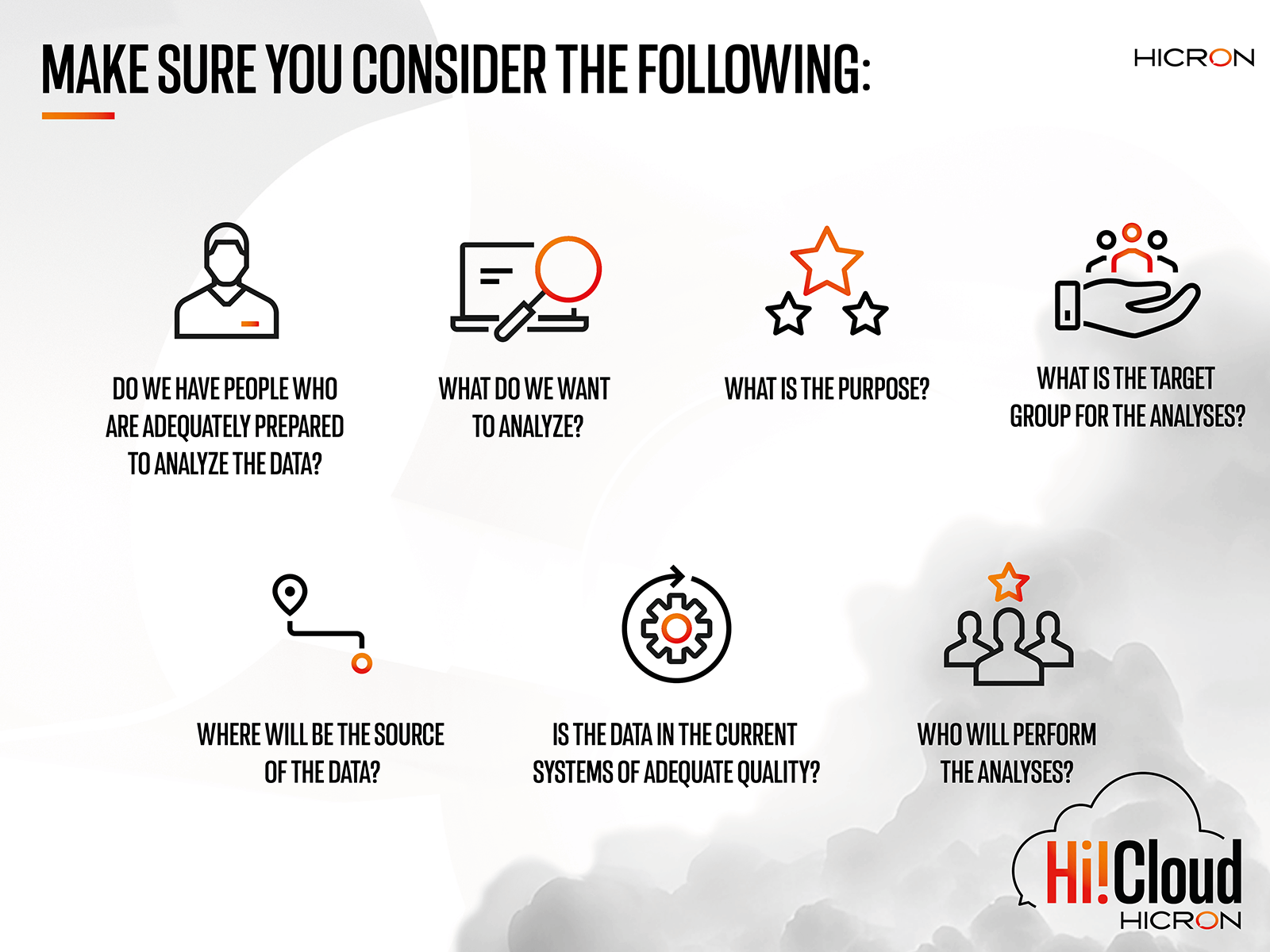Education
Education is critical to efficient analytics. It’s essential for both analysts and occasional users to be familiar with the tools and their functionalities. Proper training will make people much more willing to use them and start relying on the data in their daily work. Data presentation, resource utilization, productivity, and forecast accuracy will improve as a result.
In addition to technical training, it is also advisable to provide general training to raise awareness of the importance of data to the organization and to show the benefits of using it to make everyday work easier.
Data culture
This concept goes far beyond education. In addition to software-related skills, employees should know the value of data, understand the need to process it, be able to interpret the results, and, regardless of their position, keep the necessary information about their work in the system up-to-date.
– Confidence in the final report depends on confidence in source data. We need to make sure that data is entered correctly and on an ongoing basis. Even the nicest report will not be useful if there is no data culture in the organization – says Michał Gruszecki, SAP Analytics Leader at Hicron.
Incomplete data means distorted results. If this is the case, data-driven decision making will not only be ineffective, but may even have detrimental consequences.
The easiest way to verify the quality of data is to talk to employees directly and find out about their attitude to their duties related to completing information. Although this may seem like an impossible task, it doesn’t cost a thing and is not as time consuming as it may seem. Particular attention should be paid to the purpose for which the data input is used and its completeness. Developing the latter may require sealing the source system by, for example, introducing the obligation to enter certain information. Engaging in regular discussions with the business about potential analytical advantages resulting from enhanced data entry processes is also advisable. This should be an iterative process and a permanent element in the culture of the organization.
Identifying objectives and needs
Determining the objectives, needs, and manner of data processing will help the implementation partner to properly adjust the system to the client’s requirements. In practice, it is often the case that the scope envisioned by decision-makers differs significantly from what end users expect. Ultimately, this affects the quality, time, and cost of the implementation.
There are a few points to help you better prepare for the implementation of a new tool. Make sure you consider the following:
- Do we have people who are adequately prepared to analyze the data? Will they understand the data subject to analysis?
- What do we want to analyze?
- What is the purpose?
- What is the target group for the analyses?
- Where will be the source of the data?
- Is the data in the current systems of adequate quality?
- Who will perform the analyses? Dedicated team(s) or users on their own?
In the next step, it will be useful to set priorities and compare them with the company’s long-term strategy.

Security
The collection and processing of data, regardless of whether it is organizationally critical information or sensitive personal data, requires an appropriate security approach. Make sure you invest in appropriate hardware and software to help protect these extremely valuable assets.
Trust, or rather the lack of it, is also important. A zero-trust policy should apply even to your own employees. People are the weakest link in any security system, which is why it is important to establish access rights, a secure connection, or multi-level authentication.
The implementation partner should also meet the highest security standards. Verification can be based on standards such as ISO 27001 or TISAX.
Data visualization
Advanced analytical tools offer great opportunities for visual presentation of results and selection of particular elements of reports in a way ensuring readability for everyone. Users can decide for themselves which pieces of information are necessary for them.
The use of visualization contributes to easier understanding of data, faster decision-making, better overview of the current situation, and more effective internal or external communication.
The user-friendly interface means there is no need to type in commands or formulas, so it is well worth familiarizing all staff who have access to it.
Do not fear innovation
– The cloud also means access to modern technologies such as artificial intelligence and machine learning. While many people are skeptical about them or are unable to use them effectively, experience shows that they significantly speed up everyday tasks – Michał Gruszecki adds.
Monitoring latest advancements in data management trends, which SAP continuously updates in its systems, is also worthwhile.
Although individual good practices apply to different areas, user training is at the heart of almost all of them, so it should be paid particular attention. When choosing an implementation partner, it is therefore advisable to consider both technical skills and business experience to translate the knowledge into the company environment to maximize the potential of all available tools.








